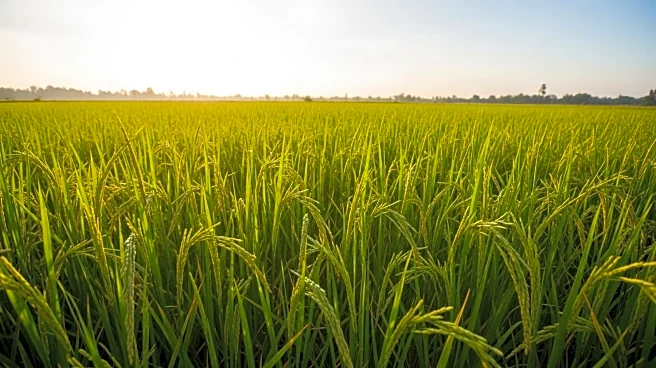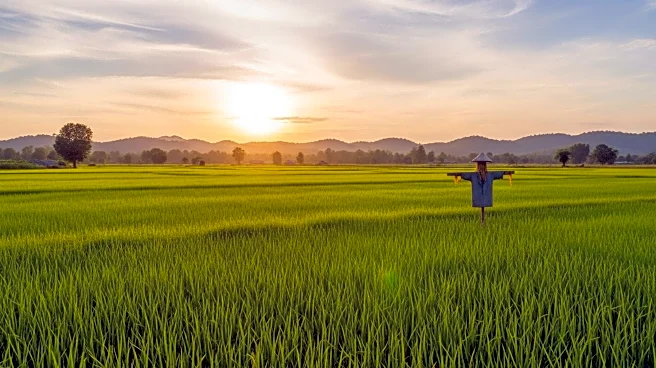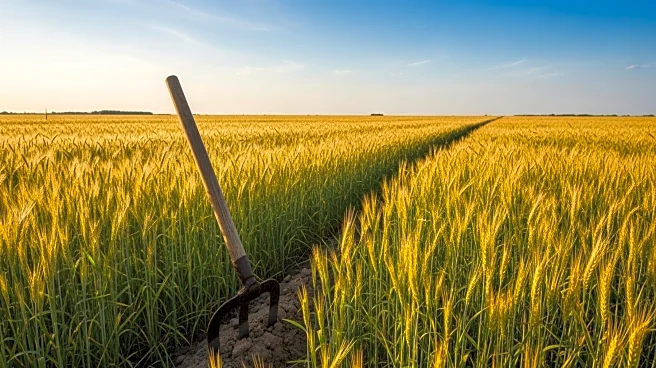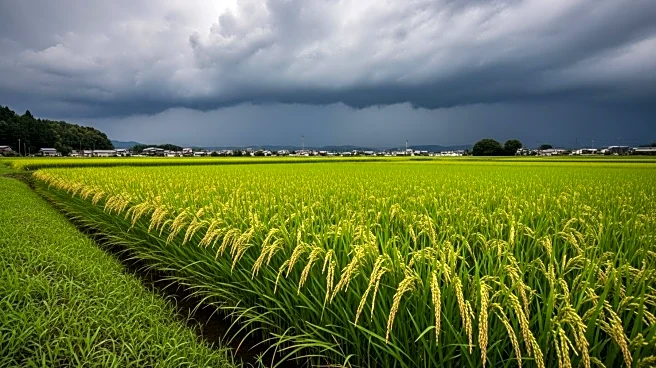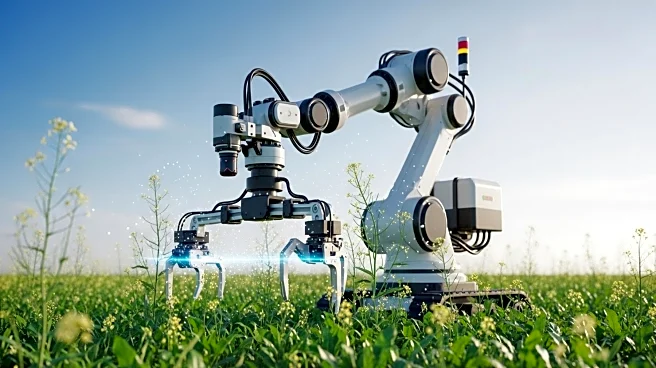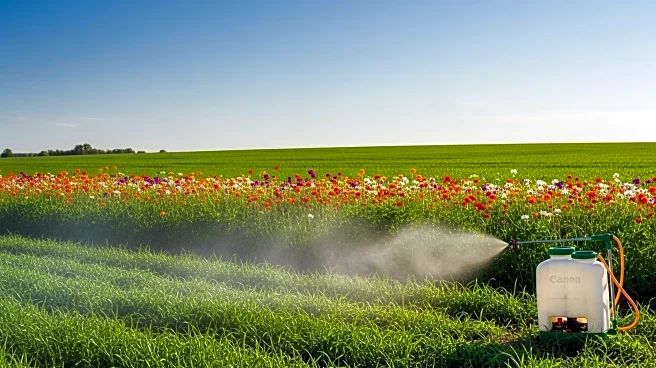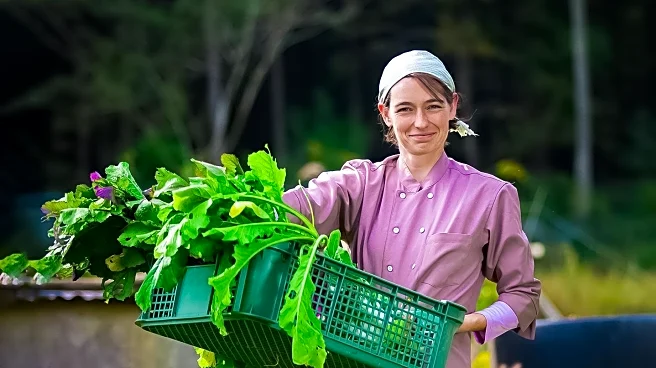What's Happening?
The Department of Agriculture (DA) in the Philippines is aiming to achieve 84% rice self-sufficiency by the end of 2026. Currently, the country is at a 77% self-sufficiency level. Agriculture Assistant Secretary U-Nichols Manalo announced this target during a budget hearing, emphasizing the need for adequate funding to reach the goal. The DA is requesting a budget of P216.1 billion for 2026 to support various programs aimed at boosting rice production, aiding farmers, and improving logistics from farms to markets. Agriculture Secretary Francisco Tiu Laurel Jr. highlighted that limited funding has historically weakened the agriculture sector's contribution to the economy, which employs one in five Filipinos but only contributed 10% to the GDP last year. The DA's efforts are part of a broader strategy to reduce the agricultural trade deficit and meet the food demands of the growing population.
Why It's Important?
Achieving higher rice self-sufficiency is crucial for the Philippines, as it would reduce reliance on imports and strengthen food security. This move is significant for the agricultural sector, which plays a vital role in the economy but has been underfunded. Increasing self-sufficiency could lead to better economic stability and support for local farmers, potentially boosting their income and livelihoods. The initiative also aims to address the agricultural trade deficit, which has been widening due to increased food imports. If successful, this strategy could enhance the country's resilience against global market fluctuations and contribute to sustainable economic growth.
What's Next?
The DA plans to implement various programs to achieve the rice self-sufficiency target, contingent on receiving the proposed budget. These initiatives will focus on increasing rice production, supporting farmers, and improving logistics. The government aims to reach 90% self-sufficiency by 2028, aligning with the end of the current administration. Continued progress will depend on effective execution of these programs and overcoming challenges such as climate impacts and resource allocation. Stakeholders, including lawmakers and agricultural groups, will likely monitor the DA's progress and advocate for necessary adjustments to ensure the targets are met.
Beyond the Headlines
The push for rice self-sufficiency reflects broader efforts to revitalize the agricultural sector, which has been overshadowed by other industries. This initiative could lead to long-term shifts in agricultural policy, prioritizing sustainability and resilience. It also raises ethical considerations regarding resource allocation and the balance between domestic production and import reliance. The success of this program could serve as a model for other countries facing similar challenges in food security and agricultural development.
